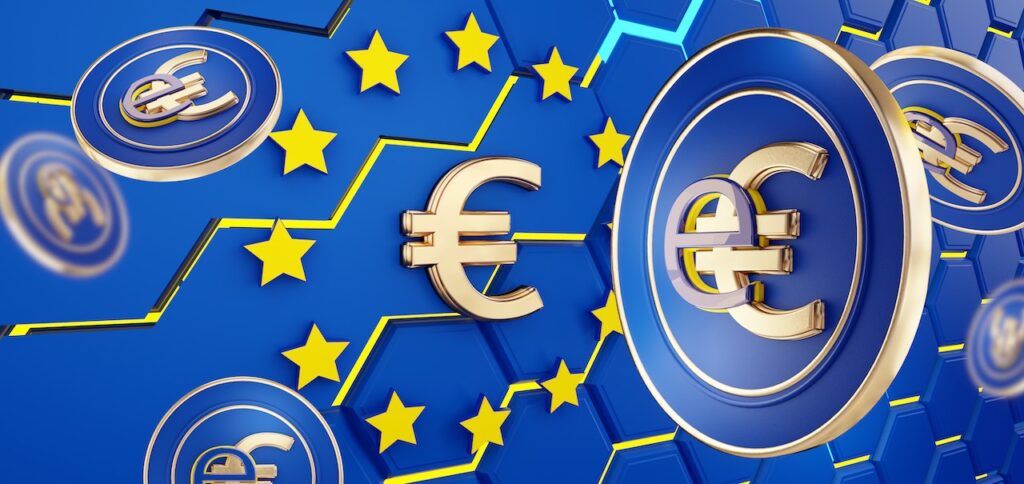
Euro Falling In the fast-paced world of global finance, every fluctuation in currency exchange rates can send ripples across markets. In recent times, the Euro (EUR) has been experiencing a downward trajectory against its major rival, the United States Dollar (USD). This decline has extended over three consecutive sessions, bringing the Euro perilously close to a ten-month low. The primary catalyst for this trend is the upcoming speech by the European Central Bank (ECB) President, Christine Lagarde, and the contrasting monetary policies of the ECB and the Federal Reserve (Fed).
The Euro Falling Downturn
The EUR/USD exchange rate has fallen by 0.1%, currently standing at 1.0457, with a session-high at 1.0475. This marks the second consecutive loss, with the currency pair touching a ten-month low of 1.0448. The Euro’s weakening position is generating significant market attention as it anticipates Christine Lagarde’s impending speech.
Euro Falling Christine Lagarde’s Speech
ECB President Christine Lagarde is set to deliver an address in Frankfurt. Her recent testimony before the EU Parliament hinted at concerns within the Eurozone. Lagarde acknowledged that recent economic indicators point towards weaknesses in the Eurozone’s economic landscape. While inflation is gradually tapering off, it is still expected to remain at elevated levels for an extended period.
Lagarde remains confident that the current interest rates are sufficient to achieve the ECB’s target of 2% inflation in the medium term. The ECB intends to rely on upcoming economic data to determine the duration of these high-interest rates.
European Rates
Recent data revealed that consumer prices in the Eurozone rose at the slowest pace in two years during September. This reduction in inflationary pressures aligns with the ECB’s plan to pause its policy tightening for the remainder of the year. The ECB’s belief in these measures aims to stabilize the economy and manage inflation effectively.
US Rates
On the other side of the Atlantic, the United States is experiencing a different economic landscape. Strong data and bullish statements from Fed officials have increased the likelihood of another 0.25% interest rate hike before the year’s end. Following robust job opportunity data, the odds of a November rate hike rose to 31%, while the odds for a December hike climbed to 46%.
Rate Gap
A significant point of interest for investors is the current interest rate gap between Europe and the United States. At present, this gap stands at 100 basis points, its narrowest since May 2022. By the end of the year, this gap could expand to 125 basis points. This widening divergence in monetary policy decisions between the ECB and the Fed is a critical factor driving the Euro’s decline.
In conclusion, the Euro’s fall in European trade is a complex interplay of economic indicators, central bank policies
and market sentiments. Christine Lagarde’s speech will likely provide crucial insights into the ECB’s future actions, shedding light on whether the Euro’s downward trend will continue or reverse. As the financial world closely watches these developments, investors and traders must remain vigilant and adaptable to navigate the ever-shifting landscape of global currencies.
FAQs
-
Why is the Euro falling against the US Dollar?
The Euro is weakening due to concerns about the ECB’s monetary policy and the growing interest rate gap between Europe and the United States. -
What impact does Christine Lagarde’s speech have on the Euro?
Lagarde’s speech can provide insights into the ECB’s future policies, influencing the Euro’s direction in the short term. -
How is the ECB addressing inflation in the Eurozone?
The ECB believes that current interest rates are sufficient to achieve the 2% inflation target in the medium term. -
What is the current interest rate gap between Europe and the US?
The gap is currently at 100 basis points but could potentially widen to 125 basis points by the end of the year. -
How are US interest rates affecting the Euro’s value?
Strong economic data and the possibility of a Fed interest rate hike are driving capital flows towards the US Dollar, putting pressure on the Euro.
